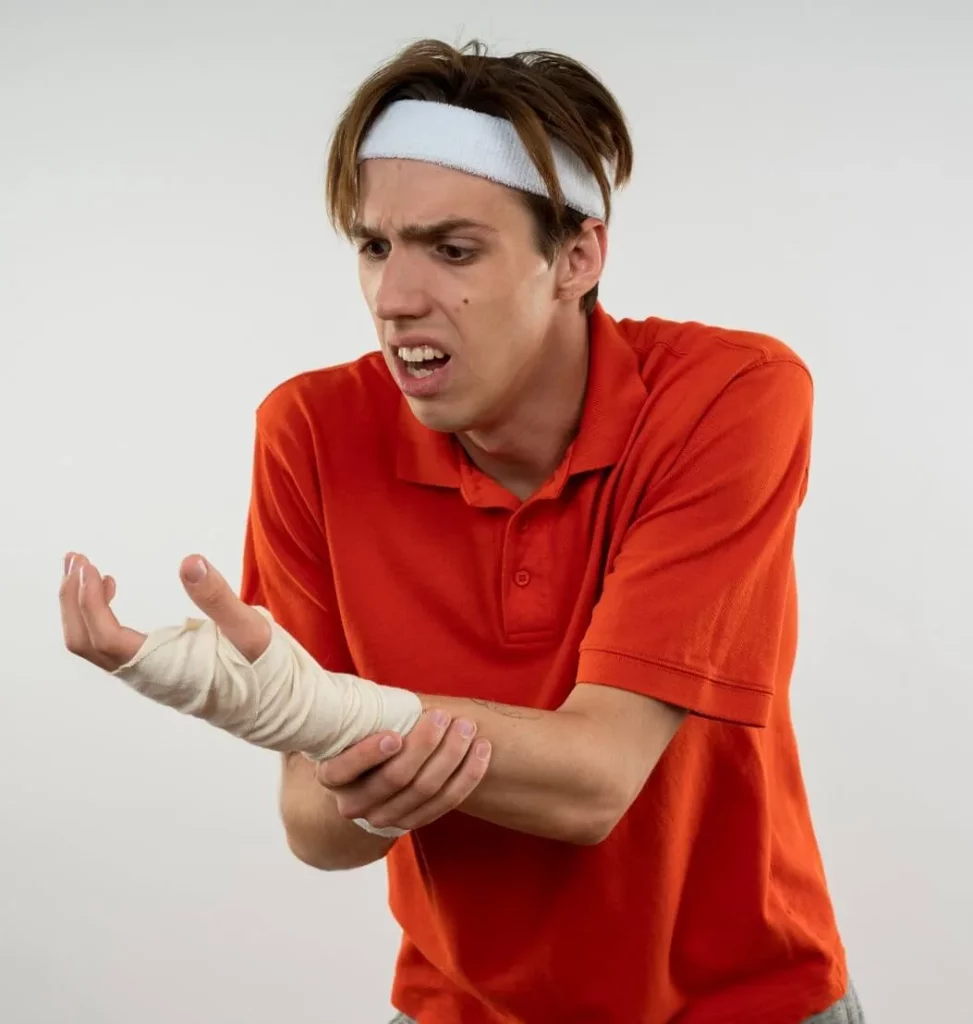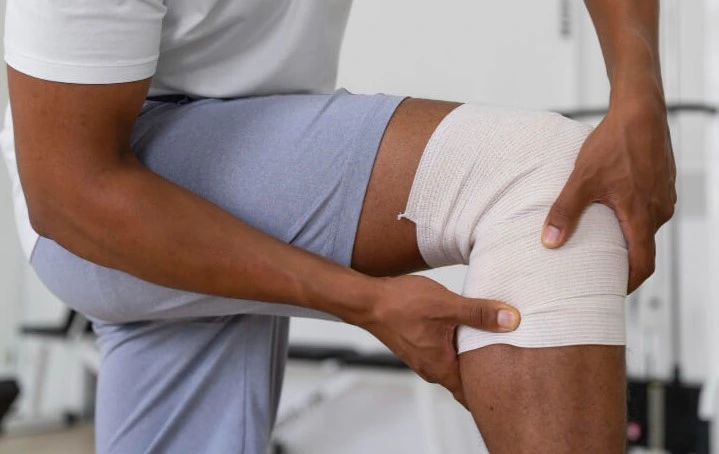The injury rate among Gymnasts is very high. In practicing gymnastics, the upper body is used as a weight-bearing joint, triggering some common shoulder, elbow, and wrist injuries.
It’s also proven that your chances of getting injured are high if you are a gymnast. As per some research, nearly 100,000 gymnasts injure themselves yearly.
In this article, we will look into the common gymnastics injuries and aids.
Understand Gymnastics
Gymnastics originated in ancient Greece and has evolved into a highly competitive sport worldwide, encompassing various disciplines such as trampoline, acrobatic, artistic, and rhythmic gymnastics. Each type demands a unique blend of physical skills and techniques.
As athletes strive for excellence in their routines, the risk of injuries is inherent. Therefore, it is crucial for individuals involved in gymnastics, including coaches and caregivers, to prioritize safety.
Seeking knowledge through avenues like caregivers’ first aid certification online can empower them with essential skills to address and prevent injuries effectively.
8 Common Gymnastics Injuries and Aids
Gymnasts need to possess both strength and grace. They practice a talent until it’s perfected, then focus on maintaining an exquisite appearance.
Gymnasts are prone to injuries to nearly every joint since they work both arms and legs. Followings are the most common gymnastics injuries and aids –
1. Labral Tears
Labral tears are also known as SLAP tears. It may occur during gymnastic exercises. Individuals who are specialists in rings and bars are particularly more vulnerable to this injury. It is characterized by pain that initially resolves but tends to return after starting a sport.
Types:
Shoulder labral tears:
1. Continuous shoulder pain, especially during overhead movements.
2. Decreased strength and range of motion.
3. A sensation of the shoulder “catching” or locking.
Hip labral tears:
1. Groin or hip pain, often aggravated by certain movements.
2. Reduced flexibility in the hip joint.
3. A clicking or popping sensation in the hip.
Treatment For Labral Tears
An MRI test can detect the problem and offer the necessary diagnosis. Doctor may suggest:
- Physical therapy to strengthen the muscles supporting the joint
- Rest and activity modification
- Medications for pain management
2. Sprained Ankles
A sprained ankle occurs when the ligaments that support the ankle joint are stretched or torn due to excessive force or unnatural twisting.
Injury to the ligaments on the outside of the ankle is common in cases with sprained ankles.
Treatment For Sprained Ankles
- Resting the affected foot is the first and most crucial step in treating a sprained ankle.
- Keeping the injured ankle elevated above heart level can minimize swelling.

Gymnasts often experience wrist strains, sprains, or even stress fractures due to the repetitive, weight-bearing nature of the sport.
As the wrist is often exposed to most of the Gymnastic practice, some common injuries around wrists are –
Sprains and Strains: If you overstretch, then sprains and strains can happen. It can force tearing the ligaments or tendons in the wrist.
Fractures: This is the most common injury gymnasts may suffer in wrists. It may involve the radius or ulna bones. This can happen due to high-impact landings or falls.
Overuse Injuries: These injuries are sports-related stress on specific body parts. When gymnasts practice repetitive gymnastics on a specific body part, overuse Injuries happen. Examples of overuse injuries are tendinitis (inflammation of the tendons) and stress fractures.
Carpal Tunnel Syndrome: Another injury gymnasts may suffer from is the risk of carpal tunnel syndrome. Carpal Tunnel Syndrome can lead to numbness, tingling, and weakness in the hand.
Treatment For Common Wrist Injuries
To prevent wrist injuries, gymnasts can follow these treatments:
- Proper Warm-Up and Stretching
- Progressive Training
- An early diagnosis can help prevent long-term issues and ensure a faster recovery.
4. Back Injuries
Injuries in the back are quite common in gymnastics. Practicing gymnastics involves extreme movements in the back and creates stress on the spine.
Common Types of Back Injuries in Gymnastics
- Spondylolysis and Spondylolisthesis
- Herniated Discs
- Muscle Strains
Treatment for Gymnastics Back Injuries:
- If you have muscle strains or mild injuries, take a break from gymnastics and let your body heal.
- The physical therapist can advise a customized rehabilitation plan to strengthen the affected muscles and improve the range of motion.
- For long-term issues, pain relievers or prescription medication can help you manage pain and inflammation.
5. Injury to Achilles Tendon
The repetitive stress of jumping and landing can cause a range of injuries to gymnasts’ Achilles tendon, which is placed directly above the back of the heel.
Treatments For Achilles Tendon
Calf pain from Achilles tendinitis is made worse by jumping and landing. The first course of treatment should include calf exercises, stretching, activity moderation, and ultrasound.
For severe symptoms, foot immobilization for seven to ten days may be helpful. For acute symptoms, immobilizing the feet for a week or up to 10 days may be beneficial.
6. Shoulder instability
This is a major concern among gymnasts because some practice puts so much strain on the shoulder joints. Many gymnastics practices require a large range of motion and shoulder strength.
The two most common instability in the shoulder is Anterior (front) and posterior (back) shoulder instability.
Treatment for Shoulder Instability in Gymnasts:
- There is nothing better than taking a rest from daily practice.
- You must have to temporarily reduce the intensity of your training or switch to less strenuous exercises.
- Following your therapist’s suggestion, you may need to perform specific exercises. That exercise will enhance proprioception (the sense of joint position), balance, and coordination.
- Non-steroidal anti-inflammatory drugs (NSAIDs) may be recommended to manage pain and inflammation associated with shoulder instability.
7. Anterior Cruciate Ligament (ACL) Injury – Common gymnastics injuries and aids

This is a critical Ligament injury, which is also common in gymnasts. People who play soccer, basketball, football, and downhill skiing often suffer from this type of injury.
Treatments For ACL Injury
The treatment for an ACL injury in gymnastics depends on the severity and individual circumstances. Here are some common approaches:
- Let your injured knee rest and apply ice immediately to reduce swelling and alleviate pain.
- Physical therapy is essential to regain strength, flexibility, and stability in the knee. Gymnasts will work with a physical therapist to develop a customized rehabilitation plan.
- In some cases, bracing may be recommended to stabilize the knee during recovery and prevent further injury.
8. Colles’ fracture
Most frequently, falls onto an outstretched hand result in fractures to the collarbone. The distal radius is displaced toward the rear of the hand or forearm as a result of the fall’s stress on the bones.
Treatment For Colles’ fracture
Doctors can treat Most Colles fractures with splinting or casting. Following a Colles fracture, some patients may benefit from surgery to realign and regain wrist function.
Some Less Common Gymnastics Injuries
Besides some common gymnastics injuries, there are also less common ones that can occur.
- Concussion
- Spondylolysis and Spondylolisthesis
- Neck strain
- Gymnast’s Ankle
- Groin pull
- Hamstring pull, tear, or strain>
- Iliotibial band syndrome
- Meniscus tears
- Pulled or strained calf muscle
- Shin splints
Most Serious Gymnastics Injuries
Besides the common and less-common gymnastics injuries and aids, there exist some serious injuries –
- Neck (cervical) fractures
- Bone fractures
- Head injuries and Concussions
Common gymnastics injuries and aids – Additional Tips
By utilizing safety equipment, following recommended training by specialists, and using the following advice, many gymnastics injuries can be avoided:
- When training or competing, always wear the appropriate safety gear. This may include pads, wrist guards, hand grips, shoes, ankle or elbow braces, and grips.
- Don’t “play through the pain”; instead, see your doctor and adhere to all treatment and rehabilitation recommendations if you are injured.
- Ensure that first aid is provided at all events and practices.
- Check that all of the equipment is in working order. This includes the safety harnesses for learning challenging movements, the padded floors, and the mats that are firmly placed beneath each apparatus.
- Seek out spotters when acquiring new abilities.
- Try some light cardiovascular exercises to warm up your muscles, such as running or jumping jacks.
Conclusion
If you have read our article this far, you must have got an idea on Common gymnastics injuries and aids.
Our first aids guide for gymnastics injuries has curated the most common Gymnastics injuries. Gymnastics is a beautiful and challenging sport, but it comes with the risk of injuries.
Recognizing and addressing these injuries promptly is crucial for a gymnast’s well-being. Following the quick aids and focusing on injury prevention, gymnasts can enjoy a safer and more fulfilling experience in this demanding sport.
Safety and the physical and psychological well-being of gymnasts should always be a top priority in gymnastics training and competition.

Joshua is a staff writer at Health Magazine Lab covering fitness, gym, and health clubs. He is interested in how technology changes physical activity and health.

